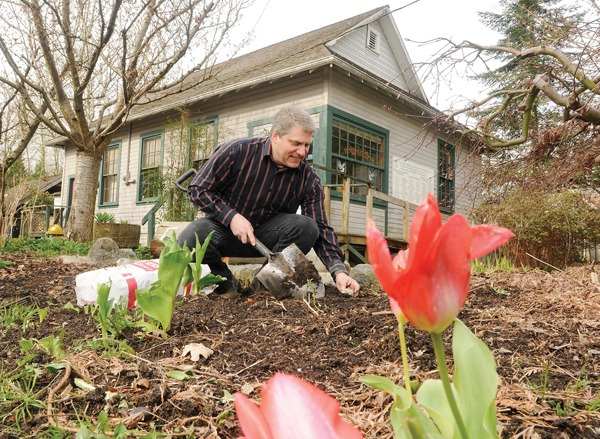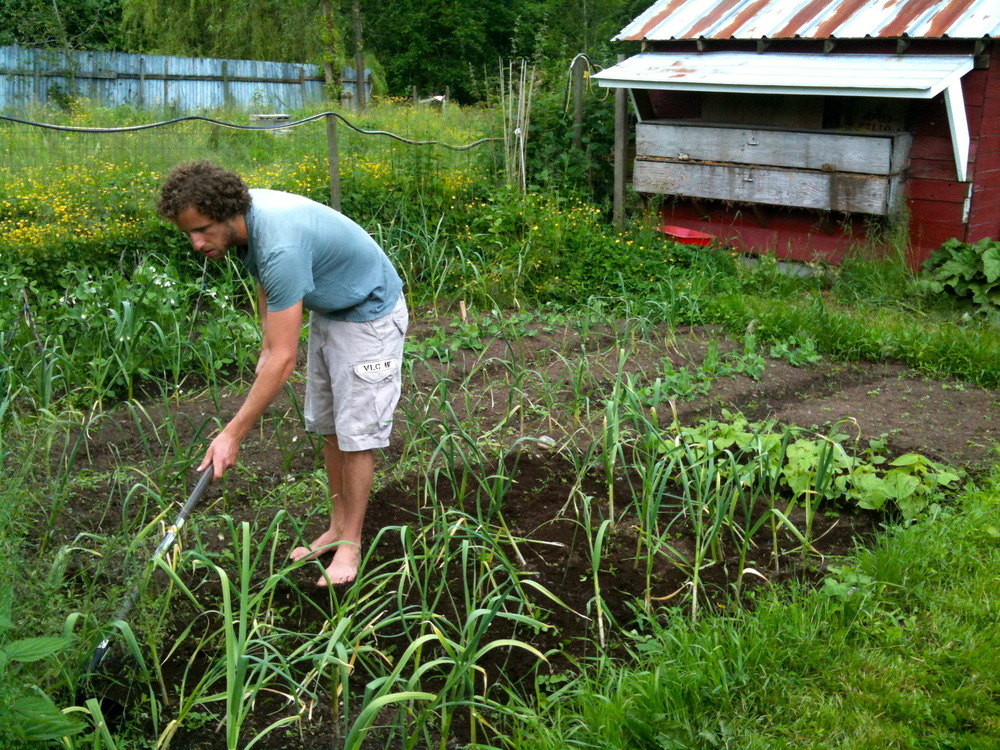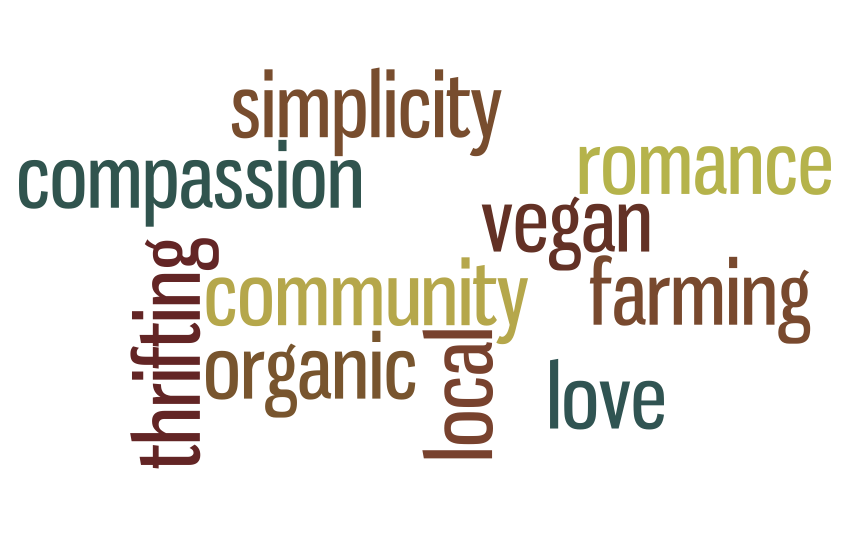Writing out my goals for 2012 inspired me to think about some of the lifestyle changes that I made in 2011. Some were planned, others unexpected, and all represent a new way of living that I want to continue pursuing. I thought I’d share my personal top 5 here – as a way to document the changes for myself, to express gratitude for the positive impact they’ve made on my life, and to encourage others to spend time reflecting on the positive changes they made for themselves last year too.
Looking back on 2011, I am so thankful for:
1. Farmer Romance: Yep, it’s true. I’ve found myself a boy to love. I’m not one who typically shares personal romance stories on the internet, but this isn’t just any boy. Chris is a likeminded, homestead-dreaming, city-turned-farmer boy whose presence has made me very happy. Having him in my life means that free time is reprioritized so that we can spend it together, that I have an accountability partner for my ‘pursuing a healthier life’ goals, and that I have someone to make plans for the future with (cob house and permaculture business anyone?). Although he didn’t enter my life until halfway through 2011, he was definitely my highlight of the year and I am very, very thankful for him.
2. Going Vegan: I often joke that going vegan was just a matter of time for me. For the last 10 years there have been a number of significant people in my life who follow a vegan diet and lifestyle: employers, close friends, boyfriends, family members… This topic deserves a blog post all it’s own (which I promise to write), but for now I’ll keep it short and simple by saying that my interactions with the animals on our farm as well as personal research and group discussions about the ethical, environmental and health implications of a vegan diet led me to officially adopt it in October. Although I don’t know how to answer all the inquiring questions and critiques I hear from people about it yet, the more I explore it, the more comfortable and convicted I feel about this decision. Acknowledging that I was still unconvinced about some of the aspects of it when I found myself thinking about making the switch, I decided that I’d rather make the change now and err on the side of compassion (while figuring out the details) than continuing to consume and use animals products (potentially causing harm to innocent animals) before making my mind up about it. To err on the side of compassion – seems like a good motto for many of life’s situations.
3. Returning to Thrifting: In line with my desire to significantly decrease the materialism in my life and to save money, I made an effort last year to buy used instead of new (and only when I really needed something). This has applied mostly to clothing and household goods (which are already very minimal because I live in such a small space) and has been an enjoyable and rewarding process. Thrifting is something that I’ve always loved and that I did consistently while I was a ‘poor’ university student, but it wasn’t until this year that I returned to it so intentionally. You may not believe it because it’s not what the billboards or magazines market to us, but coming home with a great $8 pair of used jeans instead of a $150 pair of new ones is SO satisfying.
4. Buying Local & Organic: For the past five months, I’ve been getting most of my produce and packaged goods from local farmer’s markets, Maple Ridge’s Roots Organic grocery and our own garden plots here at the farm. Although I’ve been a proponent of buying local and organic for years, it wasn’t until 2011 that I made it a consistent practice. I’ll write a more in-depth blog post about this too, but basically, I now keep this thought in mind when I shop: “If I choose to buy this non-organic product, it’s like I’m directly pouring harmful chemicals into our soil and ecosystems myself”. Not cool and definitely not something I want to contribute to. (Hopeful fact: Only 5% of consumers have to change their habits before large corporations will adjust their practices).
5. Community Engagement: It took a year of living in Maple Ridge before I really branched out and started getting to know anyone other than the few people I live on the farm with, but 2011 saw me joining the board of the CEED Centre, regularly attending their lively, weekly coffee discussions (open to the public – every Wendesday from 10am – 12 noon!), and becoming an active participant in Maple Ridge’s Transition Town movement, GETI. Connecting to other people and local initiatives has been incredibly inspiring, exciting and rewarding. You may not think it when you drive down Dewdney Trunk Road, but there are a growing number of Maple Ridge residents who are taking an active interest in making this city a better place to live. It actually makes me think that this could become the kind of place I’d want to call home.
Of course, all of these lifestyle changes are directly connected to my hands-on gardening lifestyle here at the farm. Thanks to everyone who continues to encourage me in this and to the farm family who has helped me make this lifestyle a reality.


